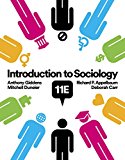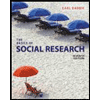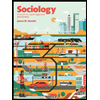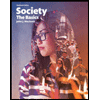
Introduction
Altruism consists of the motivation to help someone else, even if it comes at a cost to the one doing the helping. Sometimes people's helpful acts can stem more from self-interest, which involves hoping to receive something in return for their assistance. However, true altruism is when one's sole motivation for helping derives from a pure drive to benefit someone else, with no particular benefit to themselves.
Explanation of Solution
Correct answer and explanation
The best answer is (C), in which the best example of altruism involves Jawal donating money to a homeless shelter anonymously. Altruism involves the motivation to help other people, even when it comes at an expense to the one doing the helping. One's sole motivation for helping is to benefit someone else, with no benefit to themselves. Jawal's case of anonymously donating money to a shelter would qualify as altruism not only because his main drive was to help others but also due to the fact that he did not announce that he was doing so, thus indicating that he was not expecting anything in return.
Explanation for incorrect statements
Option (A) refers to Julia putting money in the church collection basket along with everyone else. However, this action would not qualify as altruism because, while it does come at some cost to herself, it occurred because she was simply doing what everyone else was doing. So, option (a) is incorrect.
Option (B) refers to Robert volunteering at his son's school to help his class. However, this scenario would actually be more akin to kin selection, which involves behaviors that aid a biological relative and are favored by natural selection. So, option (b) is incorrect.
Option (D) refers to Mary helping her husband with the dishes while hoping this will encourage him to make dinner more often. However, this situation would not count as altruism because Mary's assistance stems from self-interest. She hopes that her helpful action will be rewarded. So, option (d) is incorrect.
Therefore, the options (A), (B), and (D) are incorrect.
Want to see more full solutions like this?
- humanized short answers- What strategies could be used to help students with hearing loss to access the curriculum? What strategies can be used to help students with hearing loss be a part of the classroom community?arrow_forwardshort simple humanized answer each- How did the field of deaf education evolve, and what is the history of the debate between oral and manual communication? How are the terms deaf and hard of hearing defined? What are some characteristics of children with hearing difficulties, and why must we consider the degree, type, and age of onset of the hearing loss? What are some causes of hearing loss? How is hearing loss detected, and why is early intervention so critical? How can varying hearing levels affect a student’s cognitive, academic, social, and language development, and what can be done to maximize a student’s communication potential? What kinds of educational responses are needed for students who are deaf and hard of hearing?arrow_forwardShould U.S. foreign policy include provisions for reducing poverty in other nations of the world? Should U.S. domestic policy include provisions for reducing poverty in the United States? How are these issues similar? How are they different?arrow_forward
- Discuss Chapter 1 of Barry Glassner’s “The Culture of Fear.” Student’s may address but are not limited to discussing how the media uses individual scenarios to falsely give a wider perception of some kind, the media’ use of exaggerations and assertions and the financing of fear.arrow_forwardTake something (physical, personal or social) and change it. Tell us, what you started out with, what it looked like after you changed it, and what you did to make the change.arrow_forwardhumanized answers and couple of sentences for each: How did the field of gifted education evolve, and why is it important for giftedness to be recognized as an exceptionality? How do we define “gifts and talents,” and how are students identified? What are some characteristics of students with gifts and talents, and how can the information processing model (IPM) help us understand their needs? Why do students from culturally and linguistically different or socioeconomically disadvantaged homes and twice exceptional student continue to be under-identified for gifted-educational supports and services? What educational responses are needed to address the strengths and challenges of students with gifts and talents? What life course considerations are important for students with gifts and talents?arrow_forward
- Explain how bilingualism, monolingualism, or trilingualism has affected you while using language in the Miami areaarrow_forwardDescribe the two models of language processingarrow_forward2. How would you compare the lives of poor people living in the low-income nations of the world with those in cities and rural areas of the United States? In what ways are their lives similar? In what ways are they different?arrow_forward
 Social Psychology (10th Edition)SociologyISBN:9780134641287Author:Elliot Aronson, Timothy D. Wilson, Robin M. Akert, Samuel R. SommersPublisher:Pearson College Div
Social Psychology (10th Edition)SociologyISBN:9780134641287Author:Elliot Aronson, Timothy D. Wilson, Robin M. Akert, Samuel R. SommersPublisher:Pearson College Div Introduction to Sociology (Eleventh Edition)SociologyISBN:9780393639407Author:Deborah Carr, Anthony Giddens, Mitchell Duneier, Richard P. AppelbaumPublisher:W. W. Norton & Company
Introduction to Sociology (Eleventh Edition)SociologyISBN:9780393639407Author:Deborah Carr, Anthony Giddens, Mitchell Duneier, Richard P. AppelbaumPublisher:W. W. Norton & Company The Basics of Social Research (MindTap Course Lis...SociologyISBN:9781305503076Author:Earl R. BabbiePublisher:Cengage Learning
The Basics of Social Research (MindTap Course Lis...SociologyISBN:9781305503076Author:Earl R. BabbiePublisher:Cengage Learning Criminalistics: An Introduction to Forensic Scien...SociologyISBN:9780134477596Author:Saferstein, RichardPublisher:PEARSON
Criminalistics: An Introduction to Forensic Scien...SociologyISBN:9780134477596Author:Saferstein, RichardPublisher:PEARSON Sociology: A Down-to-Earth Approach (13th Edition)SociologyISBN:9780134205571Author:James M. HenslinPublisher:PEARSON
Sociology: A Down-to-Earth Approach (13th Edition)SociologyISBN:9780134205571Author:James M. HenslinPublisher:PEARSON Society: The Basics (14th Edition)SociologyISBN:9780134206325Author:John J. MacionisPublisher:PEARSON
Society: The Basics (14th Edition)SociologyISBN:9780134206325Author:John J. MacionisPublisher:PEARSON





